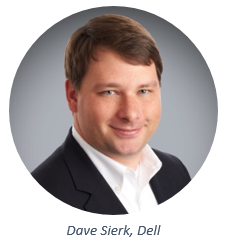Paid Search: 3 things you should know while running a PPC campaign
“You cannot sit down and wait for shoppers to get to your site,” said Victor Yacaman, Ecommerce Director, Leonisa. Leonisa is the No. 1 provider of underwear in Latin America, with 52% of sales generated from paid search.
With the ability to track and measure visitors, it’s no wonder PPC has continued to be widely used by retail marketers, “[which] means you can spend more dollars on the things that are working and less dollars on the things that aren’t working” said Timothy Seward, Founder and CEO, ROI Revolution.
Timothy referenced a recent study by Shop.org via Forrester, saying that, on average, “46% of [marketers’] online retail marketing budgets is spent on paid search.”
PPC ads offer a way of quickly determining ROI. “What you can measure, you can improve,” offered Seward, making the platform an easy way to optimize messaging and placement.
The analytics behind the campaign isn’t the only tool that PPC provides. In a world of big data, ad targeting can be remarkably precise.
“You can get every niche into very specific forms,” Yacaman stated, which is an interesting concept for underwear, if I do say so myself. The Leonisa team has a specific campaign for each type of product — whether it’s hosiery, shapewear or whitey tighties.
With such a variety of products and such a wide consumer base, Leonisa needed a targeted way to find its customers.
“Paid search was a solution for us because, through paid search, you can do bidding really heavily on those words where you have a really high conversion rate,” explained Yacaman.
When asked how marketers can improve their own PPC campaigns, the pair offered these three pieces of advice:
1. Identify your target customer and behavior patterns
By having “niche” ads for each product and each target audience, you’re helping the consumer find a solution that will serve them best. Having specialized campaigns contextualizes your ad in the mind of the customer and invites them to continue the conversation with you further in the buying funnel.
2. Determine the devices your customers use to access your site
“57% of customers in the U.S. are transacting with your website based on multiple devices,” said Seward. Customers don’t just browse on the family desktop in the living room anymore. They’re searching on their phone, reading reviews on their work computer and purchasing on their iPad later that night. Consumers have a volatile shopping experience, and your PPC ads need to accommodate their journey.















